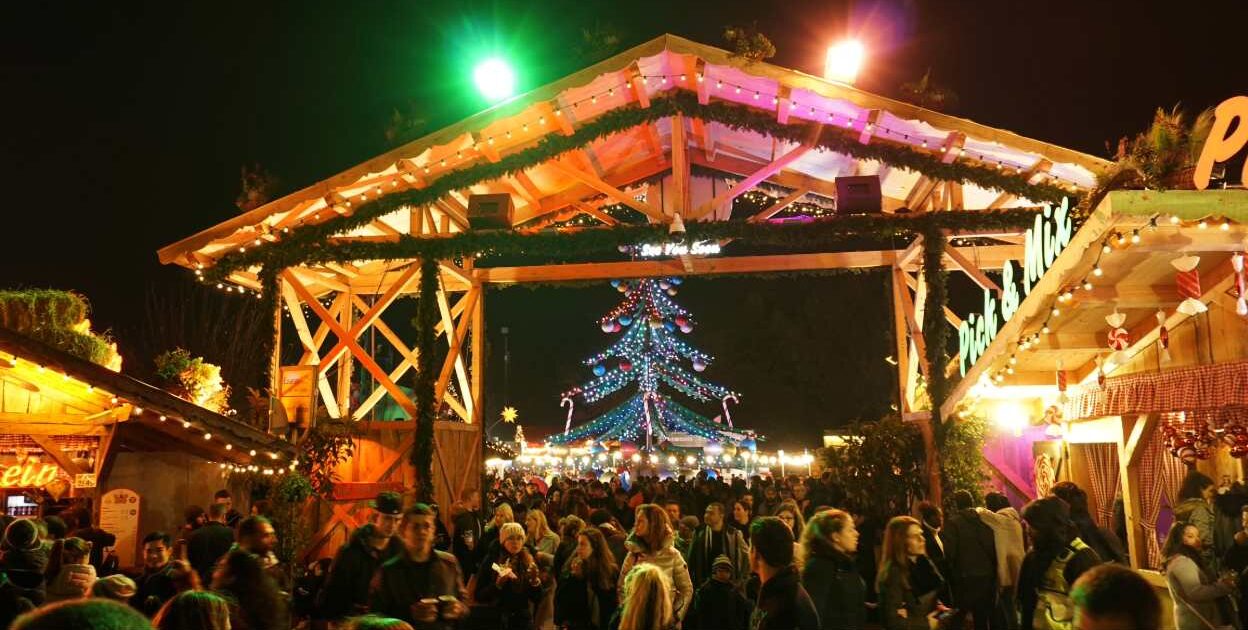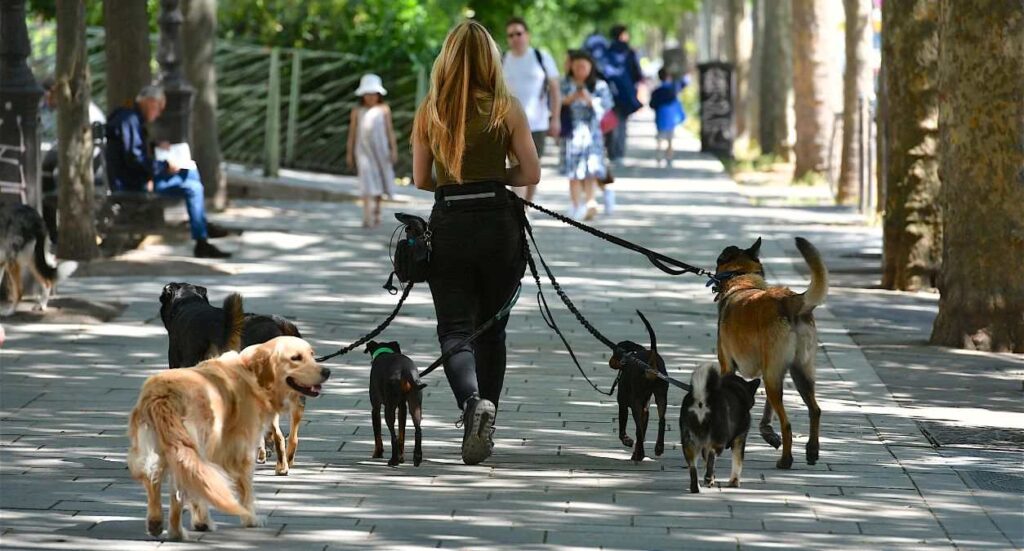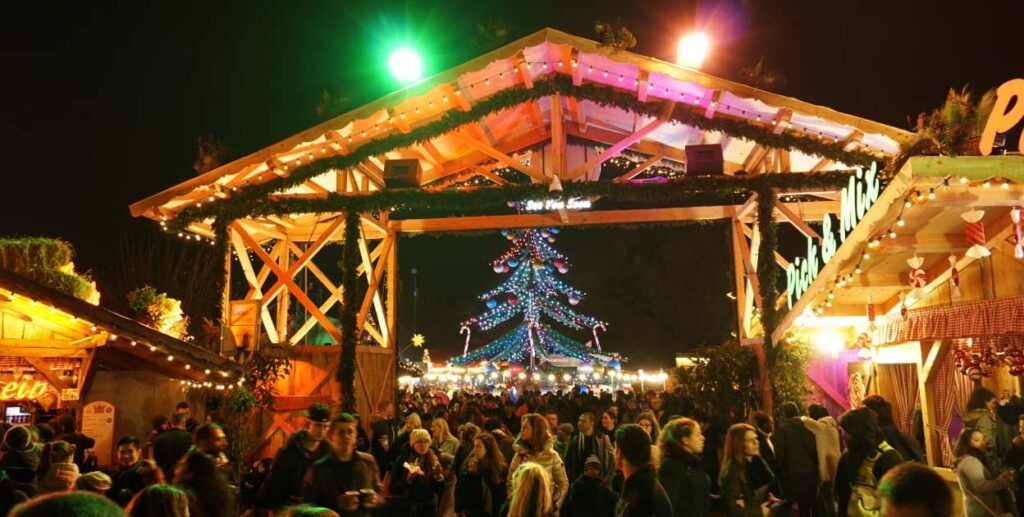Research shows that most consumers in the UK start buying gifts for Christmas in November, with the vast majority of gifts being purchased in the 8 weeks preceding Christmas day (spanning November and December)…
However, Christmas shopping in the UK is a major source of stress for many – YouGov research found that more than two-fifths of Christmas shoppers are stressed about gift shopping – with common causes including the pressure of finding the perfect gift, the cost of presents, overcrowded shops, and time constraints and last-minute rushes.
Christmas markets turn shopping into a cheerful seasonal experience rather than just a chore.. According to Visit Britain, visiting a Christmas market is a popular seasonal activity that many Brits (38%) plan to do during the festive season. These events can be great options for those keen to support small, local businesses and artisans while finding thoughtful presents that feel more personal.
The majority of Christmas markets in the UK open from mid-November – tying into these key shopping dates – but some are already open (such as Birmingham Frankfurt Christmas Market!).
With this in mind, we researched demand for Christmas markets across the UK, also seeing how this differs to demand throughout the year for regular markets and similar events (like craft fairs). Using the findings, we share recommendations for crafters, including those looking to be stallholders at upcoming events. Read on to find out more…
Demand for Christmas markets, markets and craft fair events
We analysed search volume data for all of the officially designated cities in the UK, which found that York, Edinburgh, Bath, Winchester, and Birmingham were the most in-demand locations for consumers looking specifically for festive Christmas market events in these areas.
Traveller review data insights also highlighted Canterbury Christmas market, Chester Christmas market, Kingston Christmas market, Bath Christmas market, and Glasgow Christmas market as having the highest percentage of 5* reviews.
Looking at regular markets throughout the year, the search volume analysis highlighted Chester, Newport, Cardiff, Coventry, Norwich, Leeds, and St Albans as the top locations. Looking at the best rated (4.5 stars or higher), it was Bath Artisan market, Strandhill People’s market in Ireland, Deddington Farmer’s market, Borough market in London, Old Market Hall in Shrewsbury, and Tynemouth markets that came out on top.
However, when comparing how the localised interest differed between evergreen ‘market’ queries to seasonal ‘Christmas market’ searches, consumer interest more than doubled in 25 of the cities, with Exeter, Dundee, Southampton, Canterbury, Glasgow, Liverpool, Sheffield, Bristol, Nottingham, Cambridge, Manchester and Lincoln amongst the locations with the biggest increases… each with an increase in excess of 200%!
When it came to craft fairs, searches were lower across the board (when compared to ‘market’ and ‘Christmas market’ queries), but Birmingham, Exeter, and Glasgow were the cities that saw the biggest demand for these events.
Case study
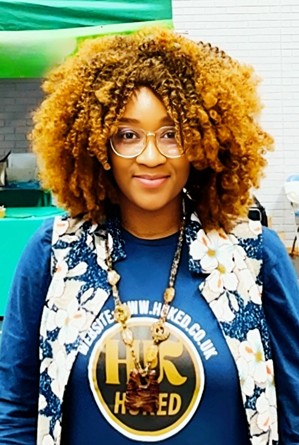
To get a first-person account, we also spoke to our customer Uchechi Osuchukwu, who is based in Wolverhampton.
Uchechi is the founder and formulator at Huked – handcrafted African heritage skincare, blended with Ayurvedic and European botanicals – which was officially registered in September 2023, but began trading and selling products in June 2024.
Discussing her experience of attending markets and craft fairs, Uchechi shared: “We’ve attended several markets and festivals across the UK, including the Portsmouth Vegan Festival and more local LSD Promotions markets, where we showcased our handmade skincare and connected directly with customers.
“These events have been great for brand visibility, live demonstrations, and receiving instant feedback. Selling face-to-face helps customers experience our product textures and natural scents, which online platforms can’t fully capture”.
She continued: “We particularly enjoy markets that attract conscious, wellness-focused buyers – events like the Portsmouth Vegan Festival, Mind & Body NEC, and Stratford-upon-Avon Upmarket. These fairs align well with Huked’s ethos of natural living, sustainability, and cultural heritage storytelling”.
Huked creates handcrafted skincare rooted in African herbal heritage and blended with Ayurvedic and European botanicals. Using powerful ingredients (like Batana oil, Vernonia (Bitterleaf), Newbouldia laevis, and Comfrey, Arnica, and Turmeric), each product is made to heal, nourish, and restore balance to the skin. Formulations bridge ancestral African wisdom with the timeless healing traditions of Ayurveda and Europe – celebrating natural beauty, culture, and craftsmanship in every jar.
She also added: “Selling in-person allows us to build genuine human connections. While online sales (via our website, Etsy, and eBay) bring reach and convenience, in-person markets create trust — people can touch, smell, and learn about the products directly from the maker. It also allows us to educate customers on our ingredients and heritage, which often leads to long-term loyalty and repeat online orders after events.
Best sellers at in-person events include Huked Magnesium Oil Spray, Huked Fenugreek Hair Growth Oil, and Huked Comfrey Ointment. Also showing how lucrative these markets can be, she shared that, in most cases, expected revenue during an in-person event falls somewhere between £300-£1000 (but can vary).

Craft fair considerations and other perceived obstacles
If you plan to sell your products at fetes, festivals, community fun days or craft fairs, stallholders may need to supply proof of liability insurance to secure your selling spot. Stallholder insurance provides a safety net, offering peace of mind and allowing you to focus on creating memorable experiences rather than worrying about potential setbacks.
When selling at craft fairs there are also certain regulations to be aware of – for example, it is important to obtain necessary permits or licences from local councils, and you may need to register your business with HMRC. Many craft fair organisers and local councils require proof of public liability insurance before allowing you to set up your stall.
Therefore, it is vital to do your research to understand the laws for selling handmade crafts in the UK, such as aspects related to safety standards, risk assessment, and hygiene, as well as product safety, labelling requirements, testing, training qualifications, and other regulations.
When researching some of the newer obstacles that crafters are facing at in-person events, one thing that came up was that some stallholders are (allegedly) using dropshipping techniques – buying products from marketplaces such as Temu, Shein, AliExpress, or Alibaba for cheap, and then reselling at a higher price point for profit – instead of designing and making their own products for sale. Homeware, clothing and accessories were the most common items for this issue in online forums discussing the topic (such as the ‘r/CraftFairs’ subreddit).
Another hot topic popped up several times in the discussions was AI. One anonymous crafter we spoke to shared frustrations that some of their peers at previous events were seemingly selling trading products that were made with AI. Online forums discussing the topic (such as the ‘r/mildlyinfuriating’ subreddit) highlight that art products are a common example cited for this practice (such as portraits, illustrations, and landscapes).
As AI-generated art becomes more common at craft fairs and art markets, it can be tricky to tell whether something was created by hand, photographed, or made using an AI model. With this in mind, we’ve shared some visual clues and other telltale signs to look for when buying art at in-person events…
Firstly, AI-generated images often include subtle inconsistencies or ‘glitches’, so looking for any odd details or anatomy (where relevant) can be a good place to start…
When it comes to art with a human subject in art, AI can struggle with realistic likeness. For example, AI still sometimes struggles with realistic fingers or natural hand poses, so look for too many or fused fingers, or strange hand positions. Eyes and reflections can also be a big giveaway – search for things like misaligned pupils, mismatched reflections, weird shadows, or an inconsistent light direction. If smaller details (such as jewellery, buttons, or glasses) appear melted, lopsided, or duplicated, this can also signal the use of AI in its creation.
In general, an unbalanced composition, inconsistent colour use, and warped or wobbly lines (particularly near intersections) can signal AI use. Clues such as repeating or ‘impossible’ patterns can also be an indication of AI – as an example, backgrounds (especially foliage, fabric, or crowd scenes) might look uniform, too symmetrical, or slightly warped.
Another proof to note is that AI also tends to mangle small text… If the artwork includes text (such as lettering, signage, book covers, or logos), check if the text is gibberish, backward, or inconsistent. Incoherent text, unreadable fonts, and uneven spacing between letters and words can also hint to the use of AI.
AI prints often come from digital files rather than scans of real paintings, so pixelation or digital noise can also be a giveaway!
If you suspect a piece might be AI-generated, speak to the seller. Some artists are open about using AI as part of their process (for concepting or composition), so ask about their process. If the seller is evasive or can’t describe their process in detail, that’s often a red flag in itself.
If you’re not deterred by the potential obstacles and want to explore selling your wares at markets this festive season, we’ve got more advice on related topics… we have previously shared various insights and tips for crafters on our blog, including a guide for starting a market stall, Christmas craft ideas to sell and how to make your display stand out from the others, and more!
Specialist Crafters Insurance from Protectivity
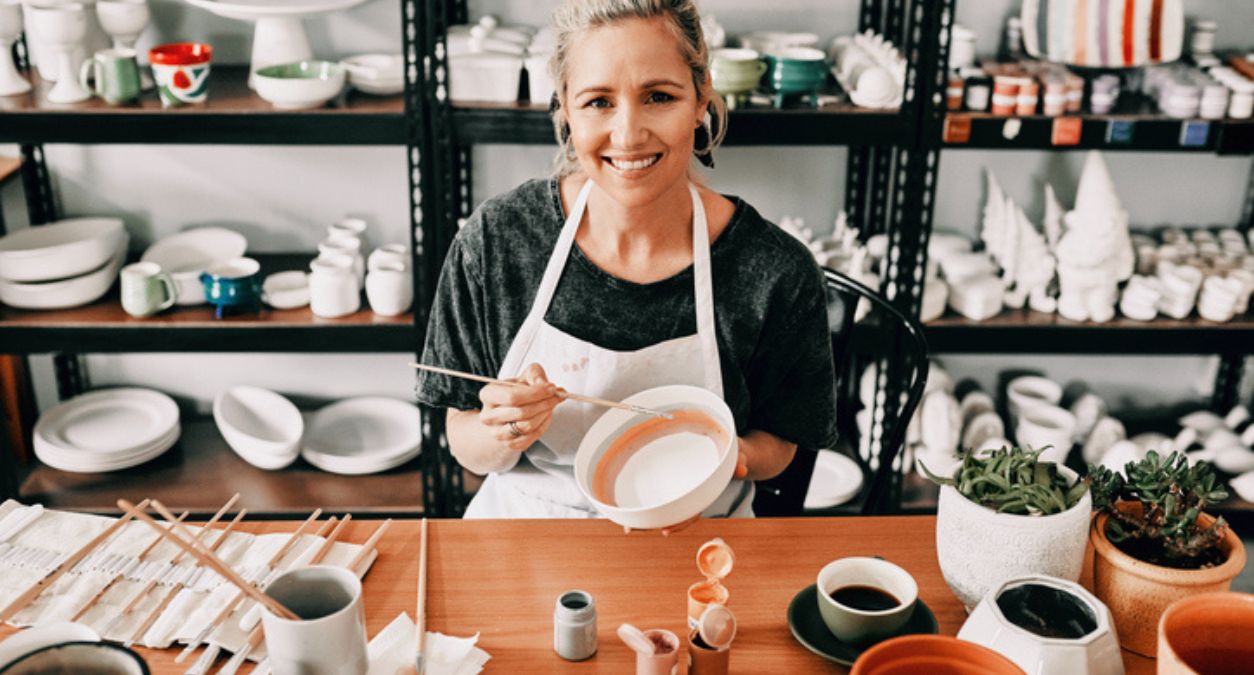
Insurance types for crafters this festive season
Craft fairs are exciting opportunities for vendors and organisers alike, but without the right protection, unforeseen incidents (such as liabilities, cancellations, or property damage) can lead to costly disruptions.
At Protectivity, our insurance for crafters includes essential liability cover tailored to individuals creating handmade crafts to sell online and at craft fairs.
Our specialist Craft Fair Insurance safeguards against public liability, property damage, and event cancellations – ensuring peace of mind for both stallholders and event organisers.
Plus, our Christmas market insurance is designed to protect those organising festive market in a variety of circumstances, allowing you to focus on creating memorable experiences rather than worrying about potential setbacks.
Specialised insurance is a wise investment that ensures your special occasion remains a joyous and stress-free affair!
*Disclaimer – This blog has been created as general information and should not be taken as advice. Make sure you have the correct level of insurance for your requirements and always review policy documentation. Information is factually accurate at the time of publishing but may have become out of date.
Last updated by




